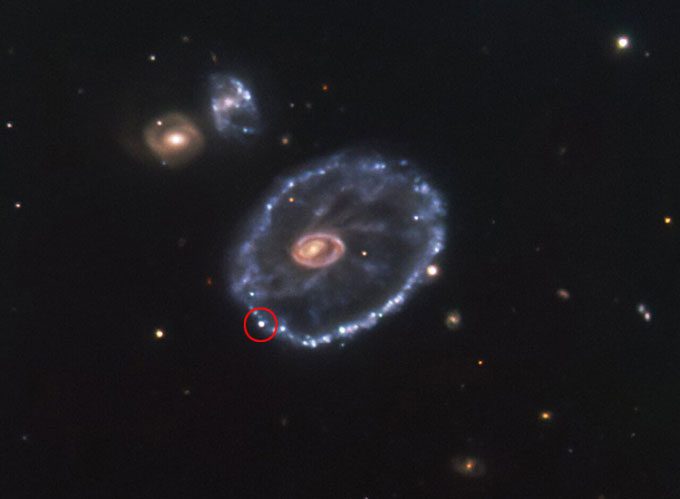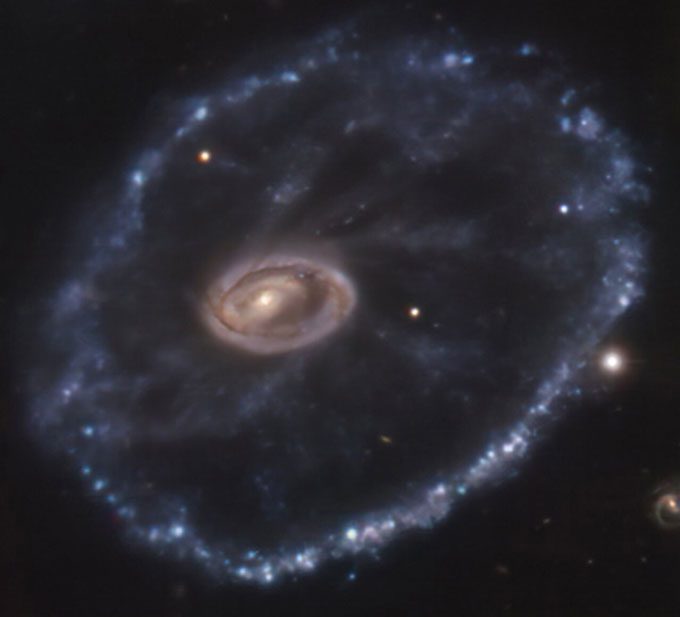The Southern European Observatory (ESO) telescope has captured a stunning image of SN 2021afdx, a Type II supernova in the Cartwheel Galaxy.

Supernova 2021afdx shines brightly at the edge of the Cartwheel Galaxy. (Image: ESO)
Located approximately 500 million light-years from Earth in the constellation Sculptor, the Cartwheel Galaxy was once a typical spiral galaxy until it collided head-on with a smaller galaxy a few million years ago, causing it to merge and transform into a lens-shaped galaxy resembling a giant wheel.
The shape is not the only intriguing aspect of the Cartwheel Galaxy. “There is a special event occurring in the lower left corner of the updated image taken by the New Technology Telescope (NTT). That is a supernova,” ESO reported last week.
Named SN 2021afdx, this catastrophic explosion is classified as a Type II supernova, which occurs when a massive star approaches the end stages of its evolution.
The research team compared the new image with older data from the Very Large Telescope (VLT) and found that SN 2021afdx did not appear in observations from August 2014, indicating that this is a new event.

The Cartwheel Galaxy captured by the VLT in 2014. (Image: ESO)
A supernova can cause a star to shine brighter than the entire host galaxy, and observers may see it for months or even years. On an astronomical scale, that duration is merely a “blink.”
Supernova explosions are one of the reasons astronomers say that we are all made of stardust. “They release heavy elements synthesized by the progenitor star into space, contributing to the formation of new stars, around which planets can orbit and life may exist,” ESO explains.
The detection and study of these unpredictable events require international collaboration. SN 2021afdx was first discovered in November 2021 during the ATLAS survey and was subsequently monitored by ePESSTO+ (the ESO public spectroscopic survey for transient objects). ePESSTO+ is designed to study objects that only appear in the night sky for a short period, such as supernovae. It accomplishes this using the EFOSC2 and SOFI instruments on the NTT, located at the La Silla Observatory of ESO in Chile.





















































